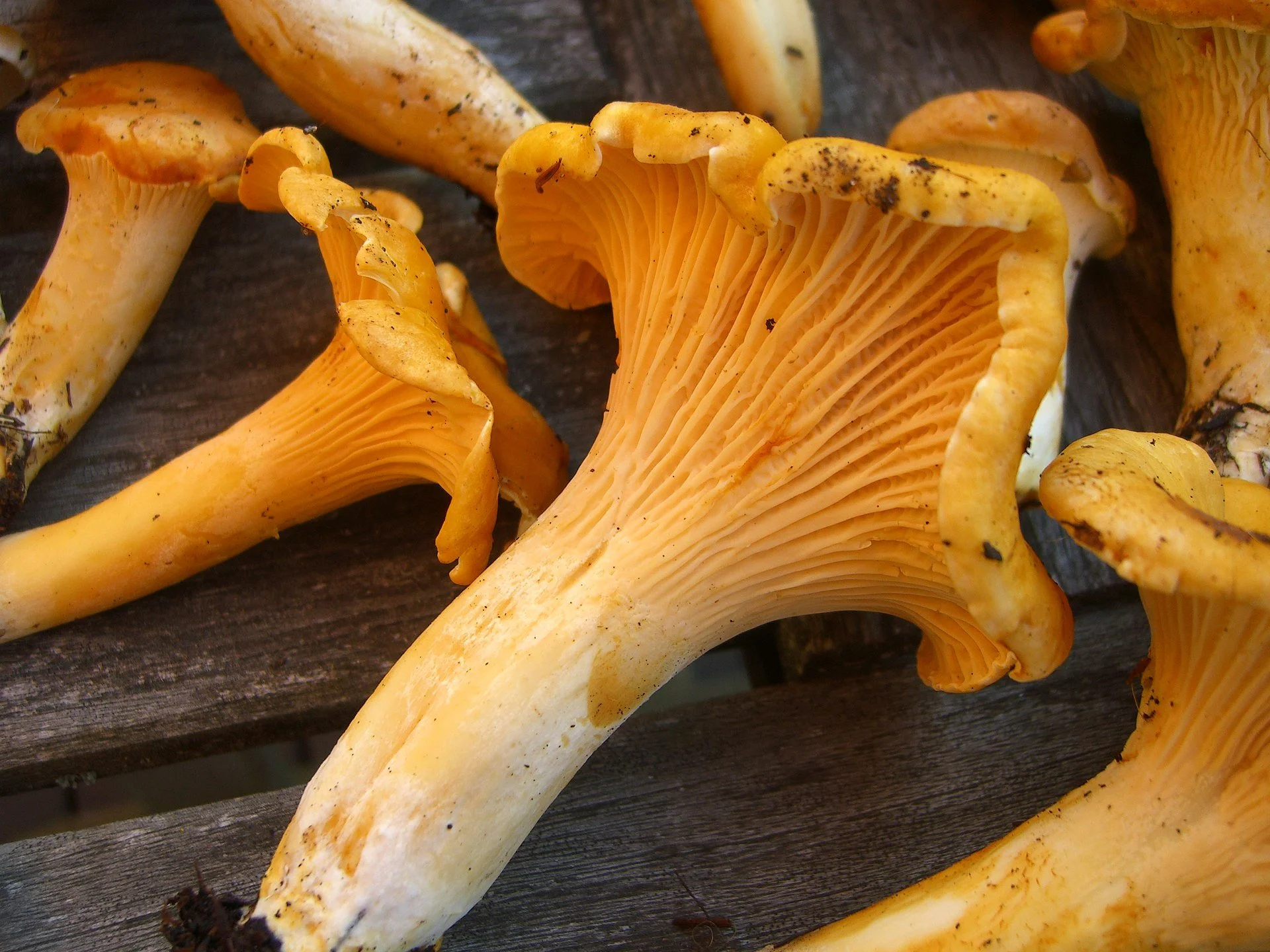
Cantharellus formosus
The Pacific Golden Chanterelle
Did you know some US states have official state mushrooms? Oregon is one and there are 2 others, can you guess which states?
The Pacific Golden Chanterelle is the Official State Mushroom of Oregon.
Conservation
& Sustainability
Ethical mushroom foraging is essential for preserving natural ecosystems and ensuring the sustainability of mushroom populations. Here's a summary of its importance and ways to give back to the land:
Preservation of Ecosystems: Ethical mushroom foraging involves respecting the natural environment and its delicate ecosystems. By following sustainable foraging practices, such as harvesting mushrooms in moderation, leaving some behind to mature and reproduce, and avoiding damage to the surrounding vegetation and habitat, foragers help maintain the ecological balance of forests and other natural habitats.
Protection of Mushroom Populations: Overharvesting and irresponsible foraging practices can deplete mushroom populations and disrupt their natural habitats. Ethical foraging practices help ensure the long-term viability of mushroom species by allowing them to reproduce and propagate naturally. This helps preserve biodiversity and maintains healthy fungal communities within ecosystems.
Respect for Indigenous Knowledge: Many indigenous cultures have deep-rooted traditions and knowledge of mushroom foraging and their ecological significance. Respecting and learning from indigenous practices can help foster a deeper appreciation for the land and its resources while honoring indigenous stewardship of natural landscapes.
Giving Back to the Land:
Leave No Trace: Minimize your impact on the environment by practicing "leave no trace" principles, which involve packing out any trash or waste, avoiding trampling vegetation, and leaving natural areas as you found them.
Educate Others: Share knowledge about ethical foraging practices with fellow foragers and enthusiasts to promote responsible stewardship of natural resources and raise awareness about conservation efforts.
Support Conservation Organizations: Contribute to conservation organizations and initiatives that work to protect natural habitats, preserve biodiversity, and promote sustainable foraging practices.
Volunteer for Restoration Projects: Participate in volunteer programs or restoration projects aimed at restoring degraded habitats, planting native vegetation, and conserving natural resources in your local area.
Respect Landowner Rights: Obtain permission from landowners or authorities before foraging on private or protected lands, and adhere to any regulations or guidelines regarding foraging activities in specific areas.
By practicing ethical mushroom foraging and giving back to the land, individuals can contribute to the conservation of natural ecosystems, protect mushroom populations, and ensure the sustainable enjoyment of wild resources for future generations.
Where Can You Find Chanterelles?
Chanterelles are a mycorrhizal, which means they are very connected to their surrounding ecosystem, largely established amongst the roots of specific tree species. For this reason, chanterelles cannot be cultivated commercially. You can find chanterelles in the wild throughout most of the US and especially the Northwest, our luck is strongest in the coastal forests of Oregon. Chanterelles like to grow near hemlock trees and usually are fruiting as early as September and as late as December.
Chanterelles are a great first mushroom to go hunting for. They are beautiful golden orange color that beautifully contrasts a dark forest. Fresh they smell of apricots, and when cooked they have a sweet nutty aroma, wonderful with butter. They do not have gills but instead have unique ridges, and an unmistakable meaty flesh that pulls apart like a stick of mozzarella. These characteristics make them a worthy prize for both professional and amateur foragers. Click below for some video content, foraging guide recommendations, and a calendar with our mushroom forays held throughout the state of Oregon in Spring and Fall.






